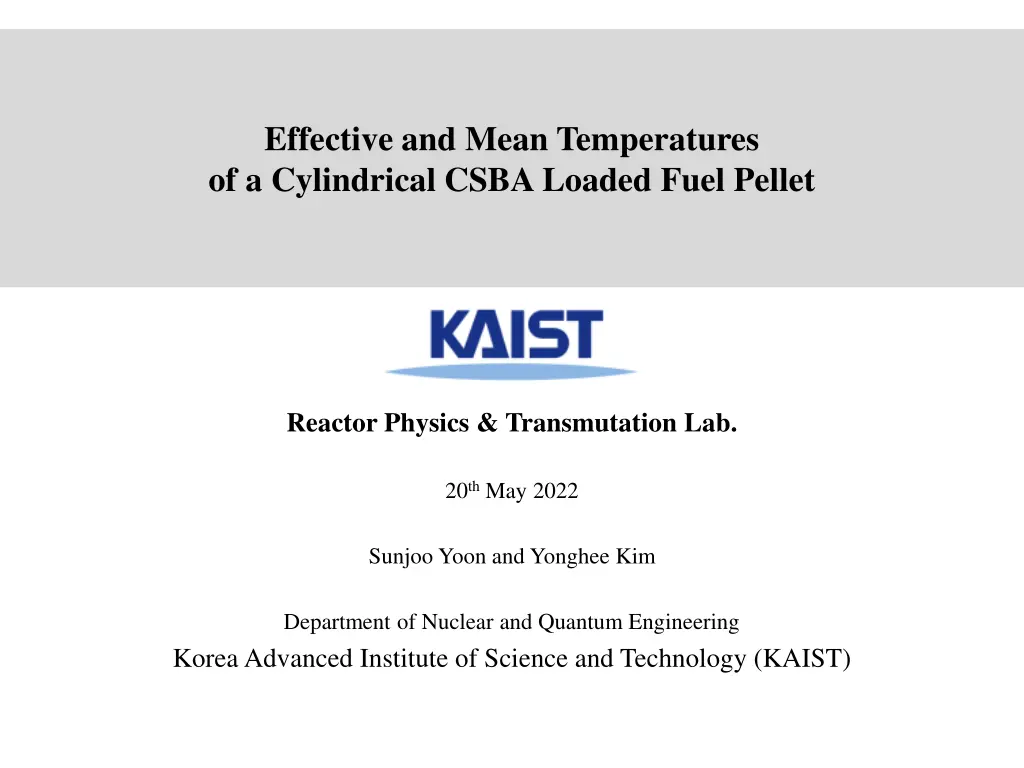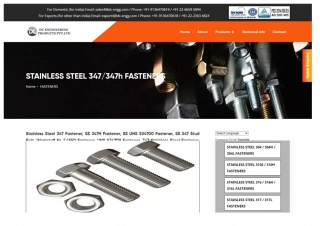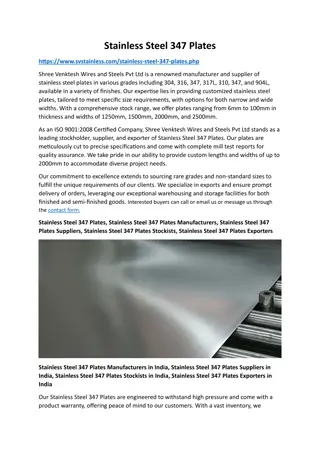
Effective and Mean Temperatures of a Cylindrical CSBA-Loaded Fuel Pellet Reactor
Explore the effective temperature concept in nuclear fuel cells with CSBA design, aiming to maintain neutron multiplication factors across varying temperatures. The research delves into the complexities of CSBA-loaded fuel cells and the challenges in estimating effective temperatures, shedding light on advancements and experimental analyses in the field. Discover the nuances of fuel pellet design, depletion analyses, multiphysics simulations, and the significance of temperature distribution for optimized reactor operation.
Download Presentation

Please find below an Image/Link to download the presentation.
The content on the website is provided AS IS for your information and personal use only. It may not be sold, licensed, or shared on other websites without obtaining consent from the author. If you encounter any issues during the download, it is possible that the publisher has removed the file from their server.
You are allowed to download the files provided on this website for personal or commercial use, subject to the condition that they are used lawfully. All files are the property of their respective owners.
The content on the website is provided AS IS for your information and personal use only. It may not be sold, licensed, or shared on other websites without obtaining consent from the author.
E N D
Presentation Transcript
Effective and Mean Temperatures of a Cylindrical CSBA Loaded Fuel Pellet Reactor Physics & Transmutation Lab. 20thMay 2022 Sunjoo Yoon and Yonghee Kim Department of Nuclear and Quantum Engineering Korea Advanced Institute of Science and Technology (KAIST)
Table of Contents 1. Introduction 2. Procedure 2.1 Fuel Pellet Design 2.2 Depletion Analyses 2.3 Multiphysics Analyses 2.4 Flat Temperature Analyses 3. Results and Analysis 3.1 Neutron Multiplication Factors 3.2 Temperature Distribution in Pellet 3.3 Processed Results 4. Conclusion RP&T Lab. 2
Introduction Effective Temperature? The effective temperature of a fuel cell is the temperature such that the fuel cell with its actual operating temperature distribution will have the same neutron multiplication factor (k-factor) as the same fuel cell with a flat temperature distribution in which the temperature is equal to the effective temperature at all points. Research on methods to estimate the effective temperature of fuel cells have been ongoing for decades, since at least the early 1960s. Centrally-Shielded Burnable Absorbers? The Centrally Shielded Burnable Absorber, or CSBA, is a nuclear fuel design concept in which burnable absorbers, such as gadolinia, are placed within the fuel region of a conventional cylindrical fuel pellet in order to compensate for the decrease in reactivity with burnup and thereby reduce the need for soluble boron in the coolant. Conventional methods of estimating the effective temperature, designed for conventional cylindrical fuel cells, may not be applicable to CSBA-loaded fuel cells! Rahman et al., 2017 RP&T Lab. 3
Procedure The procedure of the investigation was as follows. For the CSBA-loaded fuel pellet design being considered: 1. Burnup analysis material composition of the pellet at MOC and BOC conditions 2. Multiphysics-coupled neutronics analyses 3. Flat temperature analyses flat-temperature k-factor over a range of temperatures actual k-factor and temperature distribution RP&T Lab. 4
Procedure Fuel Pellet Design Cylindrical CSBAs in a cylindrical fuel cell CSBA pellets count 2 Radius, fuel region Radius, cladding inner Radius, cladding outer Height, total Radius, CSBA pellet Height, CSBA pellet Pin pitch 0.40958 0.41873 0.47600 1.00000 0.14000 0.12600 1.26230 cm cm cm cm cm cm cm Thermal power 190.96 W RP&T Lab. 5
Procedure Fuel Pellet Design Some assumptions were made in modelling the properties of the pellet. Neutronics cross-sections were evaluated from values tabulated 300K The doppler resonance cross-section extrapolation module in the iMC code was used Thermal conductivities of the fuel and cladding were adopted from Rahman et al. 1 ?????= 0.1148+0.0035?+2.475 10 41 0.00333? ?0.0132??? 0.00188? ?????= 12.767 5.4348 10 4? + 8.9818 10 6?2 (burnup in megawatt-days per kilogram uranium) (temperature in degrees Celsius in the first equation and in Kelvin in the second) RP&T Lab. 6
Procedure Depletion Analysis Objective: determine the material composition of the fuel and CSBA regions at MOC and BOC conditions. 10 burnup steps, up to 50 MWd/kgU 6 burnup regions: 3 in the fuel region (radially divided) 3 in the CSBA region (inside outwards) iMC Code 3D, mesh-based, stochastic analysis code For each burnup step: 100 inactive and 300 active cycles 20,000 neutron histories RP&T Lab. 7
Procedure Multiphysics Analyses Objective: determine the actual k-value and temperature distribution of the fuel cell Gmsh: Creating the tetrahedral mesh for the iMC analyses 3D mesh containing 39,090 tetrahedra iMC Code For each burnup condition (BOC, MOC, EOC), 3 iterations were conducted between the neutronics analysis and the thermal analysis 100 + 300 cycles with 50,000 neutron histories for the first two iterations 100 + 1,200 cycles with 100,000 neutron histories for the final iteration RP&T Lab. 8
Procedure Flat Temperature Analyses Objective: flat-temperature k-value of the fuel cell, at a range of different temperatures Same mesh used in the multiphysics-coupled analyses iMC Code For each burnup condition: Neutronics analyses were conducted, assuming a flat temperature distribution. Since the temperature distribution is fixed, iteration is unnecessary. Seven temperatures were tested, from 600 K to 1,200 K in 100 degree intervals. 100 + 1,200 cycles, 100,000 neutron histories Second-degree polynomial interpolation was used to estimate the flat-temperature k-value at the volume-average temperature. RP&T Lab. 9
Results Neutron Multiplication Factors BOC Conditions Reference 700K 800K 900K 1000K 1100K 1200K MOC Conditions Reference 700K 800K 900K 1000K 1100K 1200K 1.002844 7.4 1.006344 7.3 1.003718 7.0 1.000984 7.5 0.998688 7.2 0.996399 7.3 0.994263 6.9 0.979310 6.9 0.985037 6.8 0.981812 6.8 0.978845 6.9 0.976020 6.9 0.973235 6.8 0.970729 6.5 EOC Conditions Reference 700K 800K 900K 1000K 1100K 1200K 0.952446 6.8 0.960295 6.9 0.956662 7.0 0.953518 6.9 0.950306 7.1 0.947420 7.0 0.944610 6.8 RP&T Lab. 10
Results Internal Temperature Distribution Temperature at BOC Conditions Note: the temperature distributions at MOC, EOC were not visually distinct RP&T Lab. 11
Results Processed Results Surface and centreline temperatures Area-weighted average surface temperature and length-weighted average centreline temperatures respectively Fuel temperature coefficient Second-order polynomial fit between temperature and the flat-temperature k-value Gradient of this curve of best fit evaluated at the volume-weighted average temperature Centreline weight ? such that ??????????= ????????+ 1 ? ???????? RP&T Lab. 12
Results Processed Results BOC Conditions -3.22 834.55 830.50 0.4605 1.002739 1.002844 10.5 MOC Conditions -3.64 892.73 883.97 0.4574 0.979051 0.979310 25.9 EOC Conditions -4.00 951.01 931.57 0.4415 0.951835 0.952446 61.1 FTC [pcm K^-1] Temp., vol. avg. [K] Temp., effective [K] Centreline weight k-factor, flat temp. k-factor, real temp. k-factor disc. RP&T Lab. 13
Conclusion Validity of Flat-Temperature Approximation The k-factor discrepancy between the actual temperature and flat-temperature models sharing the same volume-average temperature was modest, on the order of several tens of pcm, but grew with higher burnup. This conclusion agrees with the observation made by Rahman et al. Centreline/Surface Weighted Average as an Effective Temperature Model The calculated centreline weights ranged from 0.4605 to 0.4415, decreasing slightly with burnup. This is very similar to the 4/9 (~0.4444) proposed by Rowlands, 1962. No prior literature on this subject exists; further research may be needed to assess the generalisability of this finding. RP&T Lab. 14
Thank you for listening. Are there any questions? RP&T Lab. 15
References H. Finnemann and A. Galati, NEACRP 3-D LWR Core Transient Benchmark Final Specifications , OECD Nuclear Energy Agency, 1992. C. Geuzaine and J.-F. Remacle, Gmsh: a three-dimensional finite element mesh generator with built-in pre and post-processing facilities , International Journal for Numerical Methods in Engineering, Vol. 79, No. 11, pp. 1309-1331, 2009. H. Kim and Y. Kim, Unstructured Mesh-Based Neutronics and Thermomechanics Coupled Steady-State Analysis on Advanced Three-Dimensional Fuel Elements with Monte Carlo Code iMC , Nuclear Science and Engineering, Vol. 195, No. 5, pp. 464-477, 2020. H. Kim and Y. Kim, Unstructured Mesh-Grid Multi-Physics Analysis with Monte Carlo iMC Code for Advanced Fuel Elements , Transactions of the American Nuclear Society, Vol. 122, No. 1, pp. 738-741, 2020. W. de Kruijf and A. Janssen, The Effective Fuel Temperature to Be Used for Calculating Resonance Absorption in a 238UO2 Lump with a Nonuniform Temperature Profile , Nuclear Science and Engineering, Vol. 123, No. 1, pp. 121-135, 1996. A. Rahman, X. Nguyen, and Y. Kim, A Study on Effective Temperature of CSBA-loaded UO2 Fuel Pellet , Transactions of the Korean Nuclear Society Autumn Meeting, 2017. G. Rowlands, Resonance absorption and non-uniform temperature distributions , Journal of Nuclear Energy Parts A and B, Vol. 16, pp. 235, 1962. RP&T Lab. 16






